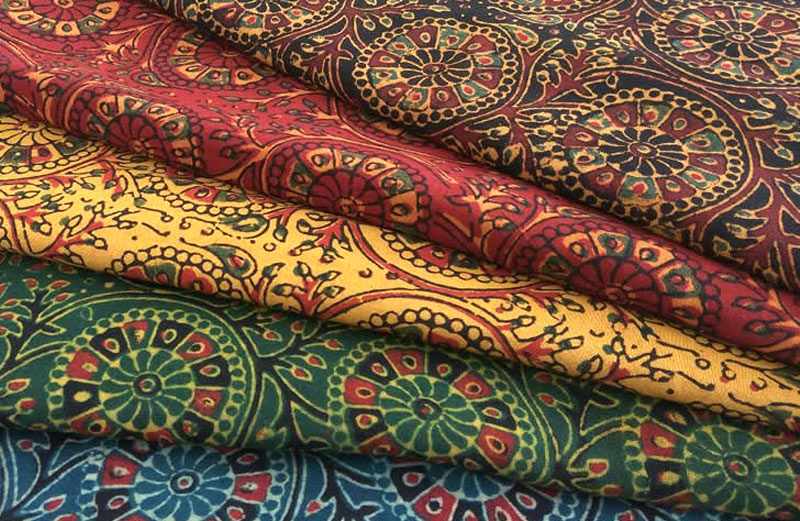Traditionally, Ajrak is the name of a block printed cloth with deep crimson red and indigo blue background, bearing symmetrical patterns with interspersed unprinted sparkling white motifs. An ancient craft, the history of the Ajrak can be traced back to the civilizations of the Indus Valley that existed around 2500 BC-1500 BC.
Ajrakh cloth carries many meanings. The popular story amongst local printers is that Ajrakh means “keep it today.” It is also linked to azrakh, the Arabic word for indigo, a blue plant that thrived in the arid ecology of Kachchh until the 1956 earthquake. Ajrakh patterns use complex geometry to create starry constellations in indigo, madder, black, and white across lengths of cloth. The shapes and motifs of Ajrakh echo the architectural forms of Islamic architecture’s intricate jali windows and trefoil arches.
After the partition of India, the production of Ajrak was carried out in Kutch, Rajasthan, and Gujarat which was once the easternmost portions of Sindh. The names and Patterns are fairly similar to those found in Sindh. There are no indications of different Traditions developing in terms of patterns used, as the influence of the Sindhi culture is still very strong in Gujarat and parts of Rajasthan. Block printing is an ancient Indian textile tradition. Cloth with block printing has been found dated back as early as 2000BC. Today this cultural tradition has been kept alive in villages Block printing represents a craft that provides a sustainable livelihood to the local families and We are dedicated to keeping that craft a viable part of India’s village economy.
The wood-blocks are hand-carved in elaborate designs; each colour is printed with a different block to complete the motif. A high degree of skill is required for both the placement of motifs and the application of pressure. Altogether there can be as many as 16 blocks to create a 5 colour design. A set of blocks can be used to print on average 1500-2000met of fabric. Colours used for printing are derived from non-toxic chemicals, minerals, and vegetable origin. Chemical dyes have replaced vegetable pigments to withstand present-day washing care and colourfast requirements. A block printed cloth reflects the touch of the human hand, the sensibility, and skill of the craftsman; every piece unique.
Each piece of fabric is hand-dyed, block-printed, and finished at Real Handicrafts Ajrakhpur, Kutch-Gujarat, India by grass-roots artisans using skills and techniques passed down through the generations.
Ajrakh Block printing undergoes various stages of process of printing and dyeing. The selected cream (any light color) cotton fabric is soaked in water for overnight and lashed with the wooden beater (bat shape wood) in the flowing water to remove the starch content and impurities in the fabric.



